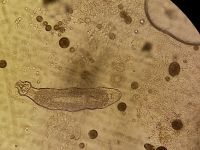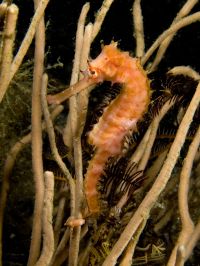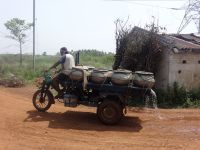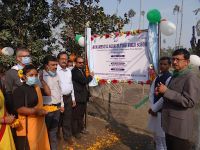In this issue:
- Ornamental Aquaculture Field School: A new extension approach
- State of the art of carp spawn production and transportation at Ramsagar, Bankura District, West Bengal, India
- Seahorse aquaculture: A new paradigm of commercial activity
- Mixed infections in tropical freshwater fish culture systems: A potential emerging threat for successful aquaculture
- NACA Newsletter
The aquatic environment contains many opportunistic pathogens and fish are frequently infected by a range of parasites, bacteria, viruses, and fungi. In most incidences of disease, the involvement of two or more pathogens are often seen, which in turn complicates diagnosis and treatment. Here we present a few case studies on mixed infections in aquaculture systems, which may become more common in future due to changing climatic patterns and associated adverse impacts on water quality. Mixed infections seem to be a big challenge to diagnostic laboratories and health specialists in terms of providing a correct diagnosis and treatment.
Seahorses are charismatic livebearers that come under the genus Hippocampus spp. Seahorses are widely distributed in tropical and temperate waters (mostly in the Indo-Pacific region) and different species can tolerate a salinity range of 6-35 ppt.
Seahorses are highly in demand for traditional medicines and curio trade purposes in the dried form and live ones are popular in the marine ornamental aquarium trade. As a result, they are vulnerable to overfishing. Since over-exploitation of these charismatic species has resulted in a drastic reduction in their natural populations, aquaculture of seahorses on a commercial scale may help to reduce pressure on wild stocks. This article provides an overview of seahorse aquaculture in India including research, the production cycle, production systems, and disease issues.
For the last five decades or so, West Bengal has been the leading state in India for the production of production and supply of major carp fry, underpinning the success of freshwater fish culture. This article describes the structure of the hatchery industry in Ramsagar, West Bengal, production practices and systems, packing, transport and links to major seed markets both within the state and elsewhere in India. Market price, broodstock management and natural breeding methods are also discussed.
The Farmer Field School approach is promoted by FAO as an alternative technology dissemination mechanism to the top-down extension methods in south-east Asian countries. In order to utilise the potential of the farmer field school approach for aquaculture, ICAR-CIFA has piloted Aquaculture Field Schools (AFS) in several states in India. AFS are schools without walls to improve the decision-making capacity of the farmers and facilitate cross-learning opportunities. It is a participatory extension methodology whereby fish farmers are allowed to choose the methods of aquaculture production through discovery-based approaches.




